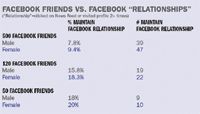Learning to Relate
A multi-phase implementation strategy can debunk the myth that social media won't work for pharma.
A recent BrandWeek headline, "Why Pharma Fears Social Networking," continued the myth that pharma companies can't participate in social media. While it's true that pharma has proceeded cautiously because of regulatory hurdles, most know it's important to participate in social media, and are establishing pilot programs, mapping regulatory processes, or launching initiatives. It's time to debunk the myth that pharma cannot employ social media.

Michael Maher
Without detailed FDA guidance for marketing online, pharma has struggled to comply with FDA guidelines issued before the Internet existed. The primary challenge was ensuring that commentary complies with established regulatory requirements, including: 1) presenting fair balance of benefits and risks, 2) reporting known adverse events to the FDA, and 3) not endorsing usage for a condition not on FDA-approved labeling.
Fortunately, there are several easy ways to comply with regulatory requirements and ensure prompt posting of approved submissions. These include expedited regulatory review processes, external third party pre-screens to reduce internal review volume, and asking very specific questions rather than inviting unrestricted commentary.
The Social Media Significance
Patients and physicians are both heavy users of social media, giving pharma the opportunity to build stronger consumer and professional relationships. By better understanding experiences, successes, frustrations, and needs, industry can respond with better education and enhanced solutions, increasing compliance and grassroots treatment advocacy.
The opportunity to engage physicians is enormous. Manhattan Research reported in 2009 that 60 percent of doctors use, or are interested in, Web 2.0 social applications. The same study found that physicians who reported using social media prescribed 24 more medications each week compared to physicians not using it.
Pharma can also benefit from a deeper dialogue with patients, who increasingly use social media to manage their healthcare. In 2008, the Pew Research Center reported that 80 percent of online consumers search for health-related information, encompassing official and unofficial sources. Furthermore, an iCrossing 2008 report said that 34 percent of health searchers use social media resources, and 75 percent seek other consumers to exchange information with.
Few Problem Postings
Available data indicates that problematic commentary on social media will be far less than feared. The vast majority of social media behavior consists of observing rather than participating, so pharma's current monitoring and response resources should be able to handle the volume.
Nielsen BuzzMetrics studied 500 messages across disease topics on Google and Yahoo's health sites, and found only one adverse event reported—a caregiver whose mother asked the community whether fluid retention, not listed as a side effect, might mean her chemotherapy medication was working. Similarly, J&J's childrenwithdiabetes.com, a community site for parents of kids with diabetes, allows people to post whatever they want, and J&J's site-monitoring reported fewer adverse events than expected.
Web usability guru Jakob Nielsen and Hitwise's Bill Tancer separately analyzed top social sites, and identified extremely low participation rates. Their 1-9-90 rule (see chart) indicates that only a fraction of Web 2.0 visitors contribute/comment, meaning pharma will likely encounter few problem postings to which they must respond.

THE 1-9-90 RULE OF WEB 2.0 SITES
Multi-Phased Implementation
So how should pharma create social media marketing programs? The following five-phased approach begins with simpler efforts requiring less regulatory review, and progresses to branded efforts that require an increased, but still manageable, level of regulatory review.
Phase 1: Monitor and learn
Before identifying social media tactics, monitor the landscape to understand what the target audience says about your product(s). Review discussion boards, Wikipedia, search engines, and videos posted online for product experiences, questions, and concerns. Few posts will meet event-reporting requirements because posters' identities aren't verifiable.
One site worth monitoring is CafePharma (cafepharma.com), which features pharma sales reps' open, often harsh, commentary about their companies' products and initiatives, including expansion plans and new drugs.
Phase 2: Set objectives and prioritize your strategy
Use what you learn to establish your social media objectives. If your company wants experience interacting with consumers, prioritize a Twitter or blog dialogue. If patients don't realize how long to use your product before seeing results, focus on persistence.
Boehringer Ingelheim's Twitter strategy (http://twitter.com/Boehringer) is to regularly engage with key stakeholders, including patients and physicians, in two-part discussions about non-promotional topics. The company recommends other Web-based disease information and articles, monitors online conversations, and responds quickly by joining or starting Twitter conversations.
Phase 3: Join existing third party community dialogues
Designate a company representative to participate. Provide medically accurate information currently missing from discussions, correct erroneous postings, or partner with the site to sponsor a subforum and provide content updates.
J&J purchased Children With Diabetes to connect with consumers by providing a community where members feel comfortable sharing information and delivering valuable, up-to-date content.
Phase 4: Create unbranded corporate or disease state sites
Initial social media activities should be unbranded, focusing on a disease state or corporate initiative. Possibilities include a disease awareness site, YouTube channel (leveraging the existing large audience) to share condition information and how-to treatment videos, or helping patients better understand their condition and improve doctor interaction. If possible, allow commentary.
Sanofi-Aventis launched its unbranded GoInsulin YouTube channel (www.youtube.com/user/goinsulin) to reach the diabetes audience where they seek health information, featuring video of real people with type 2-diabetes using insulin treatment. Consumers can't comment on the videos, but they can share their experiences by volunteering to be interviewed on a companion GoInsulin.com Web site. Lantus, Sanofi's insulin therapy, is never mentioned.
Phase 5: Create branded content
When launching branded social media, minimize problem comments by not allowing open-ended postings. Instead, request feedback on specific topics or questions. After gaining experience, loosen feedback restrictions. Invite patients to provide testimonials on the brand site.
AstraZeneca's Symbicort-branded YouTube channel (www.youtube.com/myasthmastory) features patients describing their asthma control experiences with Symbicort in testimonial videos, while risk and fair balance information is displayed on the screen. A companion Web site, myasthmastory.com, solicits the patient videos, which are reviewed by regulatory, and selections are posted on the Symbicort YouTube channel.
Future Opportunities
Most marketers are still learning how to harness social media's power, and testing which marketing approaches work best. The best pharma strategy in social environments is a "marketing as service" approach that provides richer patient education and support in a way that adds value to patients' lives.
Acuminder's Facebook and Yahoo's Widget help improve eye health by reminding contact lens wearers to change lenses, purchase new lenses, and schedule eye care appointments. The tool worked so well that bi-weekly contact lens wearers using Acuminder decreased the average number of days between lens changes from 19 days to a near-perfect compliance of 15 days.
Like the 1-9-90 Rule, emerging social media research provides insight to better inform and guide social marketing strategies. Such data help set realistic expectations about the potential depth of social media interactions and word-of-mouth activity. Facebook recently quantified the number of members' friends and the number with whom they maintain a relationship dialogue—regardless of the number of friends, members have very few "relationships." (See chart.)

FACEBOOK FRIENDS VS. FACEBOOK "RELATIONSHIPS"
As more pharma marketers plan and implement social media programs, the debate about whether the industry can do this should come to a halt. There are, in fact, numerous opportunities to engage in productive conversations with patients and physicians, who use social channels pervasively, while complying with all regulatory requirements.
Michael Maher is senior partner, director of client services at Greater Than One, a full-service digital agency specializing in pharma and healthcare. He can be reached at mmaher@greaterthanone.com.

The Misinformation Maze: Navigating Public Health in the Digital Age
March 11th 2025Jennifer Butler, chief commercial officer of Pleio, discusses misinformation's threat to public health, where patients are turning for trustworthy health information, the industry's pivot to peer-to-patient strategies to educate patients, and more.
Navigating Distrust: Pharma in the Age of Social Media
February 18th 2025Ian Baer, Founder and CEO of Sooth, discusses how the growing distrust in social media will impact industry marketing strategies and the relationships between pharmaceutical companies and the patients they aim to serve. He also explains dark social, how to combat misinformation, closing the trust gap, and more.